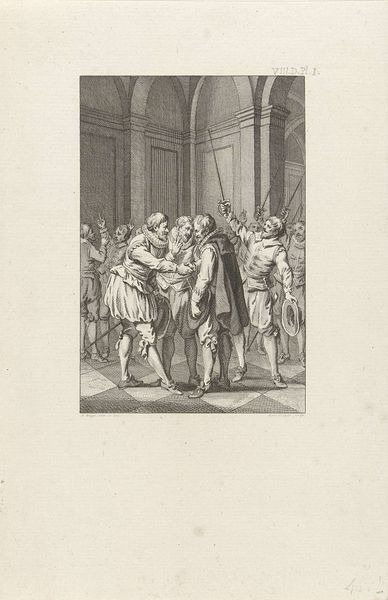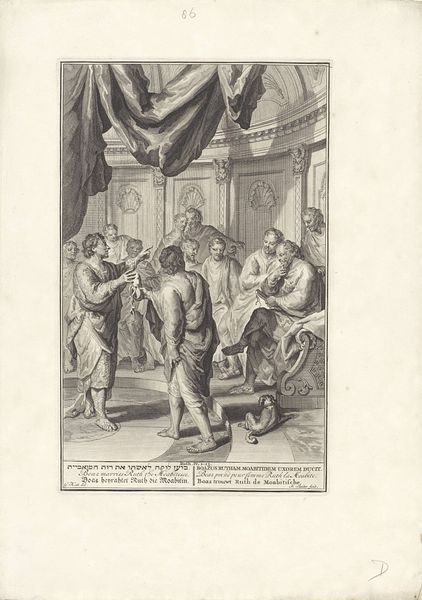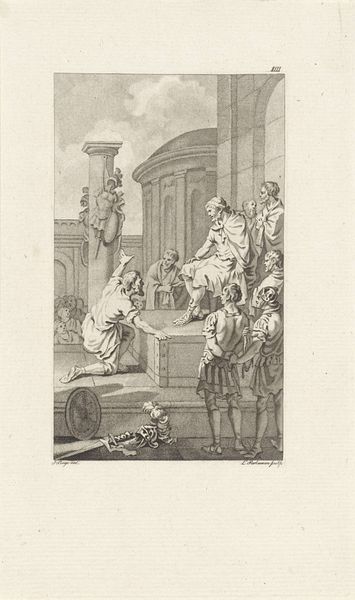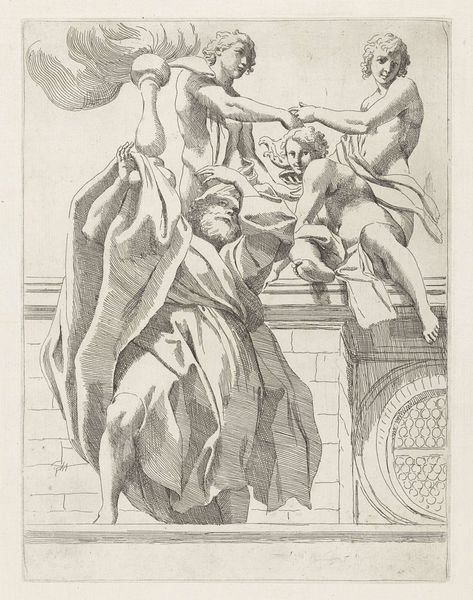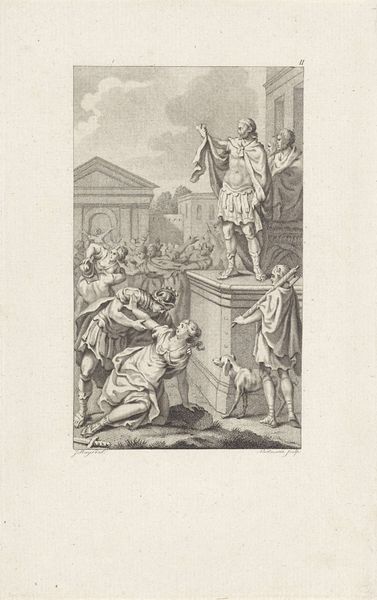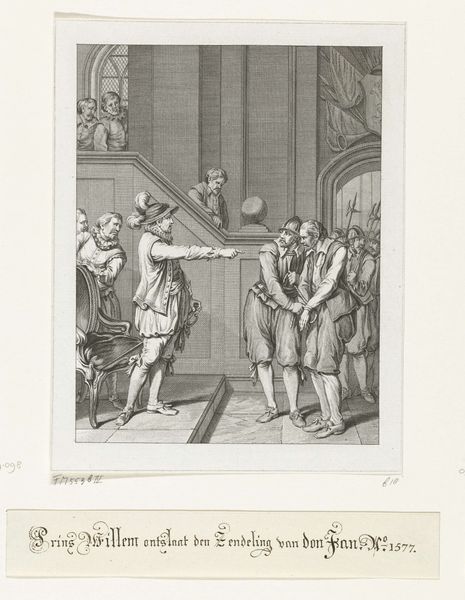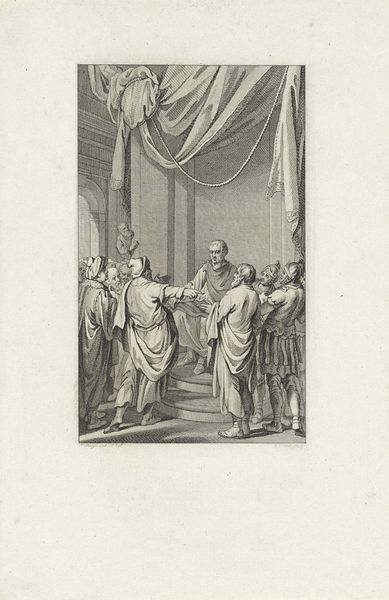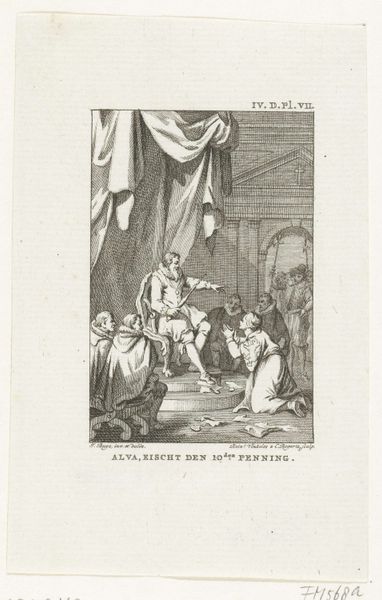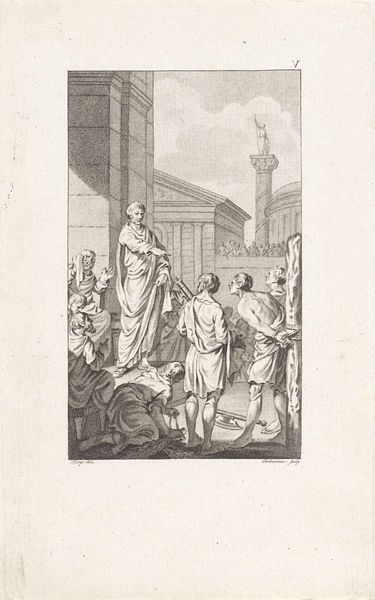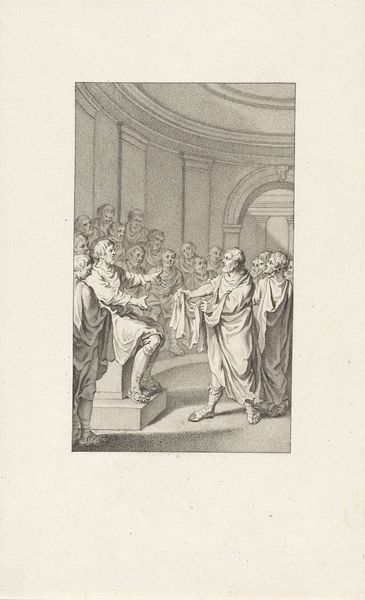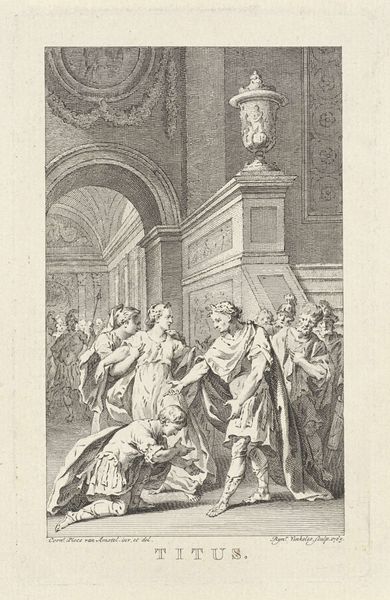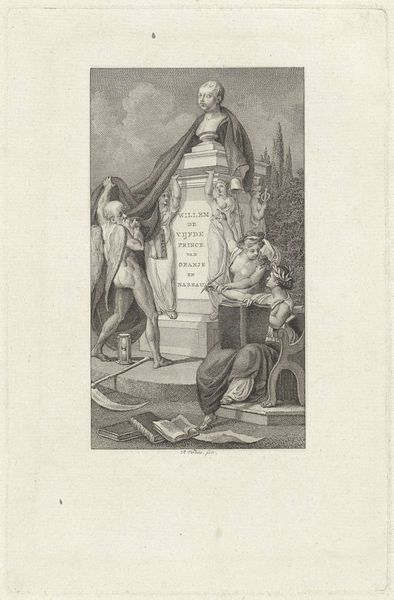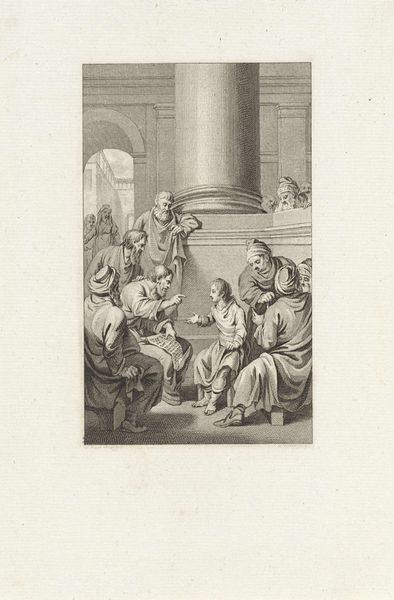
print, engraving
#
neoclacissism
# print
#
old engraving style
#
figuration
#
history-painting
#
academic-art
#
engraving
Dimensions: height 230 mm, width 150 mm
Copyright: Rijks Museum: Open Domain
Curator: Welcome. Before us is Reinier Vinkeles’ 1780 engraving, "Hannibal as a child swears an oath against the Romans." Currently held in the Rijksmuseum, it’s an example of Neoclassical printmaking depicting a famous historical scene. Editor: Immediately striking, isn't it? That somber mood, the stark lighting focusing our eye on the child Hannibal. There's a solemn weight conveyed, even within the limitations of the engraved medium. The central focus is on the almost unnervingly determined face of young Hannibal. Curator: Vinkeles captures a crucial moment in the mythology surrounding Hannibal. The Carthaginian general's lifelong conflict with Rome began, according to legend, with this childhood vow. The oath is laden with significance, essentially seeding the Punic Wars. We should bear in mind that this representation idealizes the classical world. Editor: Indeed. Look at the figures. Everything speaks of a consciously evoked classicism; idealized drapery, balanced poses. But beyond the aesthetic, it seems to tap into something deeper – this theme of inherited conflict, of oaths passed down through generations. That motif remains profoundly potent across various cultures. Note the accessories -- sword, helmet. Hannibal steps toward destiny. Curator: Certainly, the symbolic elements are prominent, as is consistent with Neoclassical principles. By depicting this moment, Vinkeles participates in a larger historical narrative, reinforcing the virtues of patriotism, duty, and the dangers of unchecked ambition for contemporary viewers. This artwork was made in a society preoccupied with moral exemplars. Editor: Absolutely. It's interesting how Vinkeles utilizes the iconography of sacrifice – the altar, the flame – to prefigure Hannibal’s future. These potent symbols enhance the print's emotional resonance, and give depth to its meaning, allowing it to echo even today. It certainly urges us to contemplate how deeply-rooted hatreds can influence individual lives and collective destinies. Curator: It is a poignant piece. Examining Vinkeles’ rendering through a contemporary lens, one must recognize the problematic romanticization of military conflict that prevailed, particularly within certain nationalist narratives. Editor: Yes. Perhaps its continued relevance lies precisely in this multifaceted reading: at once an artwork of historical intrigue, aesthetic harmony and ethical quandaries, encapsulated within an expertly engraved scene.
Comments
No comments
Be the first to comment and join the conversation on the ultimate creative platform.
